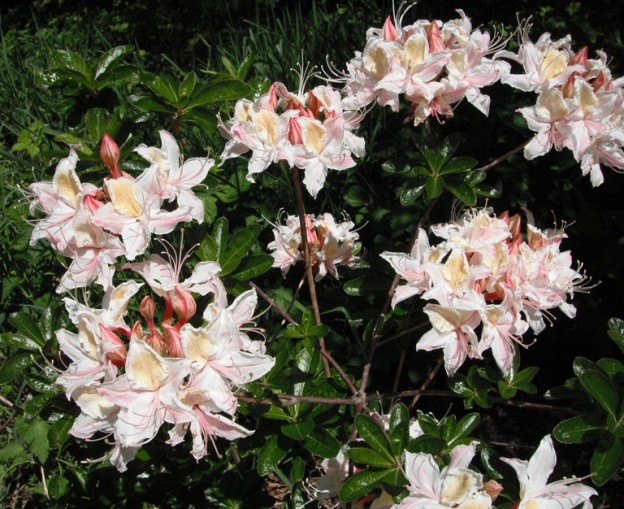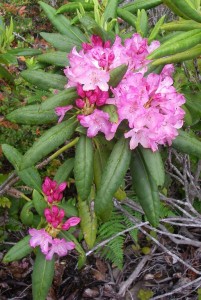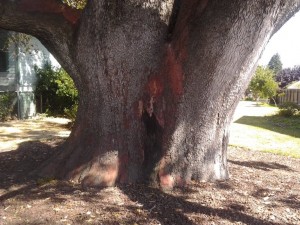Whereas conifers predominate in the canopy of our forests, members of the heath family dominate the understory of our forests, our wetlands, and alpine regions. This large family of plants lives in almost every part of the world. The petals of ericaceous flowers are fused at the base, usually forming a tube. They are usually pollinated by hummingbirds, bees and other insects. Most ericaceous plants are found in acidic, humusy soil and often depend upon fungal mycorrhiza for successful growth. Many genera are important in the field of horticulture.
Erica (Heath) and Daboecia (Irish Heath)
Calluna, (Heather)
Phyllodoce* and Cassiope* (Mountain Heathers)
Rhododendron* (includes azaleas)
Gaultheria* (Salal, Wintergreen, Pernettya)
Vaccinium* (Blueberries, Huckleberries, Cranberries, Lingonberries)
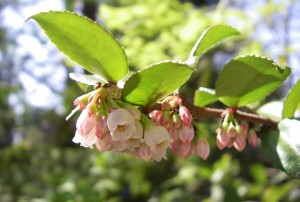
Small white or pinkish, bell shaped flowers as in this Evergreen Huckleberry, are typical for many ericads.
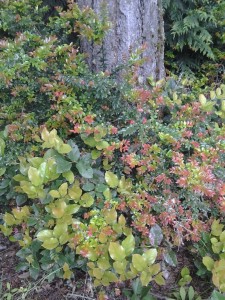
Salal and Evergreen Huckleberry are the “staples” of our native garden plants. They are also important greens for the floral industry.
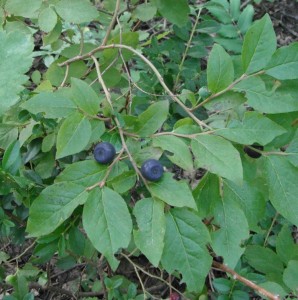
Many species are economically important, especially the Vacciniums, blueberries, huckleberries & cranberries.
Arbutus* (Madrone and Strawberry Tree)
Arctostaphylos* (Manzanitas, Kinnikinnick or Bearberry)
Ledum* (Labrador Tea)
Kalmia* (Mountain Laurel or Bog Laurel)
Menziesia* (False Huckleberry or Fool’s Azalea)
Cladothamnus* (Copperbush)

Kinnikinnick is our best native groundcover for sunny areas. The leaves were smoked by native peoples.
Enkianthus
Pieris (Andromeda or Lily of the Valley Shrub)
Leucothoe (Sierra Laurel)
Oxydendrum (Sourwood, Sorrel Tree)
* Includes species that are native to the Pacific Northwest
Also in this family are unusual plants that are parasitic on the mycorrhiza associated with conifers. They have no chlorophyll of their own and get their food from these fungi that in turn get their sustenance from the trees towering above them. These plants are known as mycoparasites, mycoheterotrophs, or epiparasites. Our native species have whimsical common names, including Indian Pipe, Pinesap, Pinedrops, Candystick, and Gnome-plant. It is not uncommon to run across their fascinating inflorescences emerging from a dark forest floor.
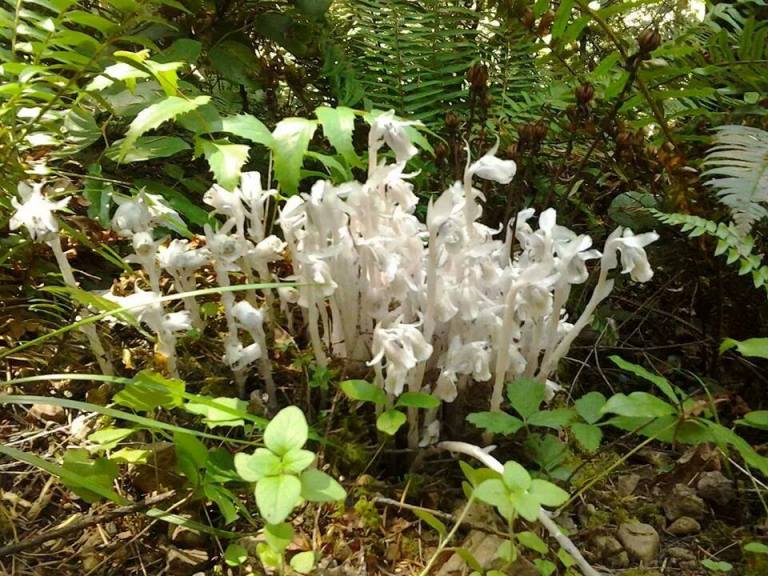
Indian Pipe, Monotropa uniflora, is a parasitic myco-heterotroph. Its hosts are mycorrhizal fungi which in turn live symbiotically in the roots of trees.

